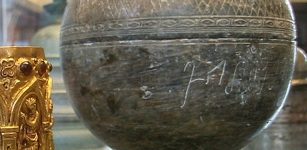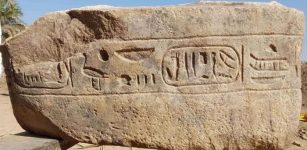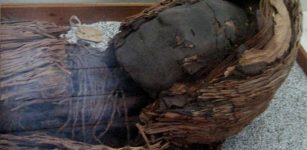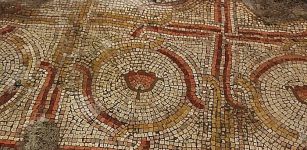Amazing Restoration Of Ancient Roman Vineyard Buried Underneath The Ash Of Mount Vesuvius For 2,000 Years
Jan Bartek- MessageToEagle.com – On the morning of August 24, 79 A.D. Mount Vesuvius in southern Italy erupted. It was one of the largest volcanic explosions in recorded history. In a surviving document left by only some surviving witnesses, the first day was perceived as normal, but small earthquakes were felt for four days before the eruption.
At the time, the region was a part of the Roman Empire, and the great cloud of hot ash, stones, and poisonous gases completely obliterated many prosperous cities, the best-known being Pompeii and Herculaneum.
The Romans widely used pergolas for growing vines.
The total death toll remains unknown but historical records show the population of Pompeii and Herculaneum was over 20,000. Until now, remains of over 1,500 people have been found at Pompeii and Herculaneum.
Some objects have survived this horrifying volcanic eruption, for example, a precious and striking ancient Roman painting.
By restoring places and objects we get a good understanding of what life was like in the ancient world.
We know ancient Romans were famous for their beautiful gardens that were influenced by Egyptian, Persian, and Greek gardening techniques, but what did a vineyard in the city of Pompeii look like?
Archaeologists started to excavate the site as early as the 18th Century, but the first significant findings emerged between 1924 and 1961 when work was overseen by Italian archaeologist Amedeo Maiuri.
As Euro News reports, “according to the official tourism site, excavations before this time weren’t carried out with much scientific or archaeological tact.
Exploring Mount Vesuvius and the ruins of Pompeii, which have been perfectly preserved by the acidic ash, remains one of the most popular activities for tourists in the region. In recent years, work has been concentrated on restoring and maintaining buildings that have already been unearthed, rather than carrying out excavations of new areas.
Volcanic materials are rich in minerals, and as a result, the soil around the Vesuvius National Park is incredibly fertile and home to many working farms and wineries. And exploring ancient Rome wouldn’t be complete without sampling a glass of wine from one of the resurrected vineyards.”
After being covered in lava when Mount Vesuvius erupted in 79 A.D. the vineyards of Pompeii were preserved in meters of ash. Archaeologists analyzed the buried vines and with help of a local winemaker were able to grow them again in the exact spot where they stood 2,000 years ago.
See also: Herculaneum Time Capsule: Ancient Scrolls With Secrets Buried Under Volcanic Ash And Stones
“The team looked at casts of vine roots made two centuries ago and consulted the surviving fragments of ancient farming texts,” Mastrobeardino told Local Italy. “We even looked at ancient frescoes to try to identify which grapes grew from Pompeii’s soil.”
The team discovered that the type of grapes their ancestors were growing, called Piederosso Sciacinoso and Aglianico, were the same varieties still being grown on the slopes of Vesuvius by local farmers.
Aglianico is a variety which Piero’s father is credited for saving from extinction after the Second World War.
Although the grape varieties were still the same, farming techniques had changed significantly since the time of the Romans.
Roman remains litter the closely-grown vines. Photo: Mastrobeardino
“We use a number of methods to grow the fruit and carry out all of the work manually. One thing all our farming techniques have in common is that the grapes are grown at an extremely high density,” Mastrobeardino explained.
At first, experts doubted whether the grapes would grow at all at yields almost twice as high as those used today. However, once placed back in Pompeii’s fertile soil, they flourished.
Mastrobeardino ferments the wine according to modern techniques and says Roman wine tasted foul.
Pompeii wines were considered among the best in the Empire, but were fiercely alcoholic and often diluted with honey, spices and even seawater to mask their rancid flavor.
Some 1,500 bottles of Villa dei Misteri are made each year and can be found on the tables of exclusive restaurants in Tokyo, London, and New York, Mastrobeardino said.
See also: More Archaeology News
“It’s more of a research project than a commercial enterprise, but it has come a long way. We have now replanted 15 of the city’s ancient vineyards and are experimenting with diverse ancient farming techniques and grape blends.”
It might not be a profitable enterprise, but it doesn’t come cheap either – a bottle will set you back around €77.
Written by Jan Bartek – AncientPages.com












